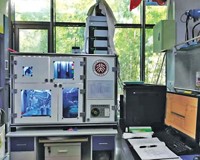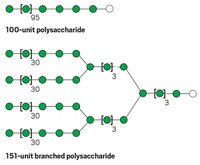Advertisement
Grab your lab coat. Let's get started
Welcome!
Welcome!
Create an account below to get 6 C&EN articles per month, receive newsletters and more - all free.
It seems this is your first time logging in online. Please enter the following information to continue.
As an ACS member you automatically get access to this site. All we need is few more details to create your reading experience.
Not you? Sign in with a different account.
Not you? Sign in with a different account.
ERROR 1
ERROR 1
ERROR 2
ERROR 2
ERROR 2
ERROR 2
ERROR 2
Password and Confirm password must match.
If you have an ACS member number, please enter it here so we can link this account to your membership. (optional)
ERROR 2
ACS values your privacy. By submitting your information, you are gaining access to C&EN and subscribing to our weekly newsletter. We use the information you provide to make your reading experience better, and we will never sell your data to third party members.
Biological Chemistry
Giant Leap For Obstinate Targets
Sugar Chemistry: Parallel combinatorial synthesis yields 12 hard-to-make oligosaccharides
by Stuart A. Borman
November 23, 2009
| A version of this story appeared in
Volume 87, Issue 47

Thanks to a new method, it may now be possible to prepare many more of the biologically important sugars known as heparan sulfates to enable study of their properties and potential as drugs.
In nature, heparan sulfates are highly sulfated linear polysaccharides similar to the anticoagulant heparin. Smaller versions are of interest as potential drugs, but they are extremely difficult to synthesize. Only about 100 heparan sulfate oligosaccharides had been reported in the literature as of last month. Now make that 112, courtesy of a parallel combinatorial technique that so far has produced a dozen oligosaccharides but has the potential to create many more (J. Am. Chem. Soc., DOI: 10.1021/ja907358k).
Heparan sulfates are involved in a spectrum of biological processes, such as lipid transport, cell growth, and cell adhesion. And changes in heparan sulfate levels have been associated with tumor growth and invasion. Scientists would like to create heparan sulfate variants more conveniently for research and drug screening, but synthesizing even a single one can take a year.
Now, Geert-Jan Boons of the Complex Carbohydrate Research Center at the University of Georgia and coworkers have found a way to make these obstinate structures more accessible: They have created modular disaccharide building blocks that can be combined in numerous ways to produce a range of heparan sulfates.
They demonstrated the approach by creating 12 tetrasaccharides. One is a good inhibitor of BACE-1, an enzyme that catalyzes a key step in Alzheimer’s amyloid plaque production. It’s “an attractive lead for preparation of more potent compounds,” Boons says.
Heparan sulfates are “incredibly difficult to generate,” comments heparin specialist Robert J. Linhardt of Rensselaer Polytechnic Institute. “No one’s ever delivered a collection like this. This approach could be very important for supplying diverse libraries to biologists and medicinal chemists for evaluating structure-activity relationships and novel pharmacological agents.”
The sugars Boons’s team put together via the new method “are all pretty complicated and have high structural diversity,” Linhardt adds. “That suggests this method is workable at least for tetrasaccharides and hexasaccharides, which are the critical size for protein binding in most cases. I think this holds a lot of promise for the field.”





Join the conversation
Contact the reporter
Submit a Letter to the Editor for publication
Engage with us on Twitter